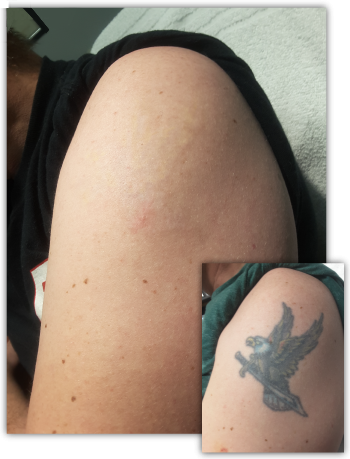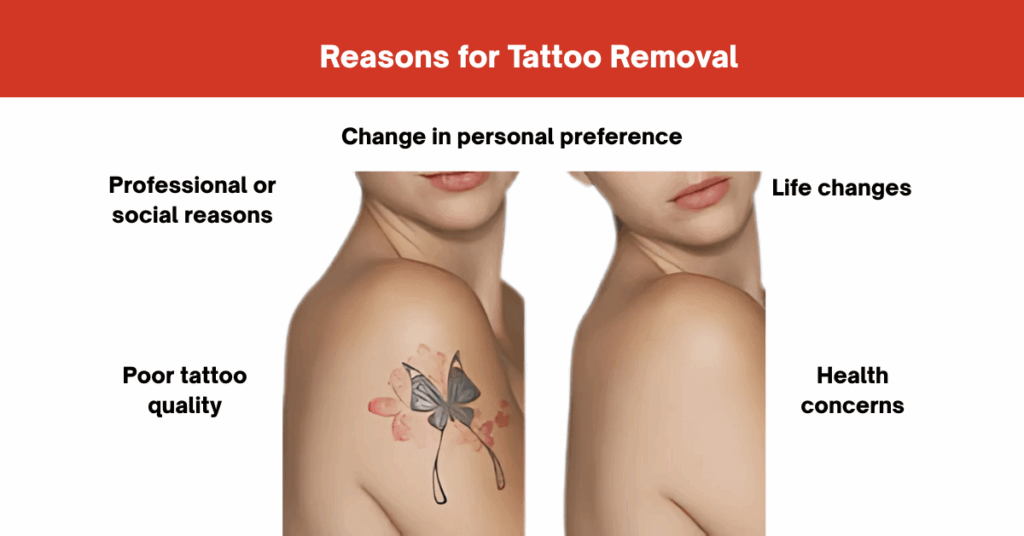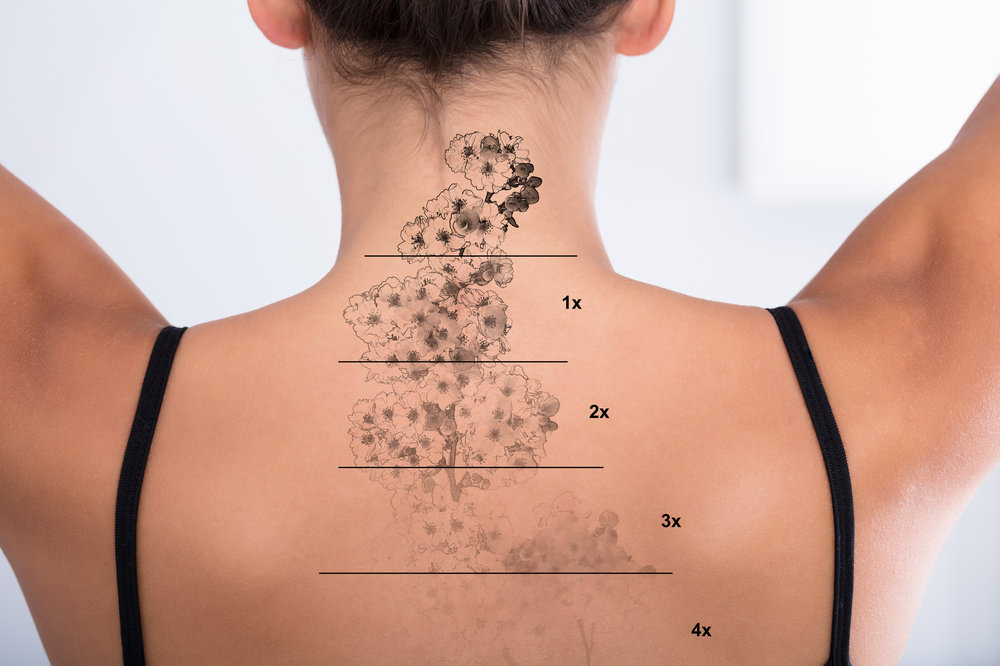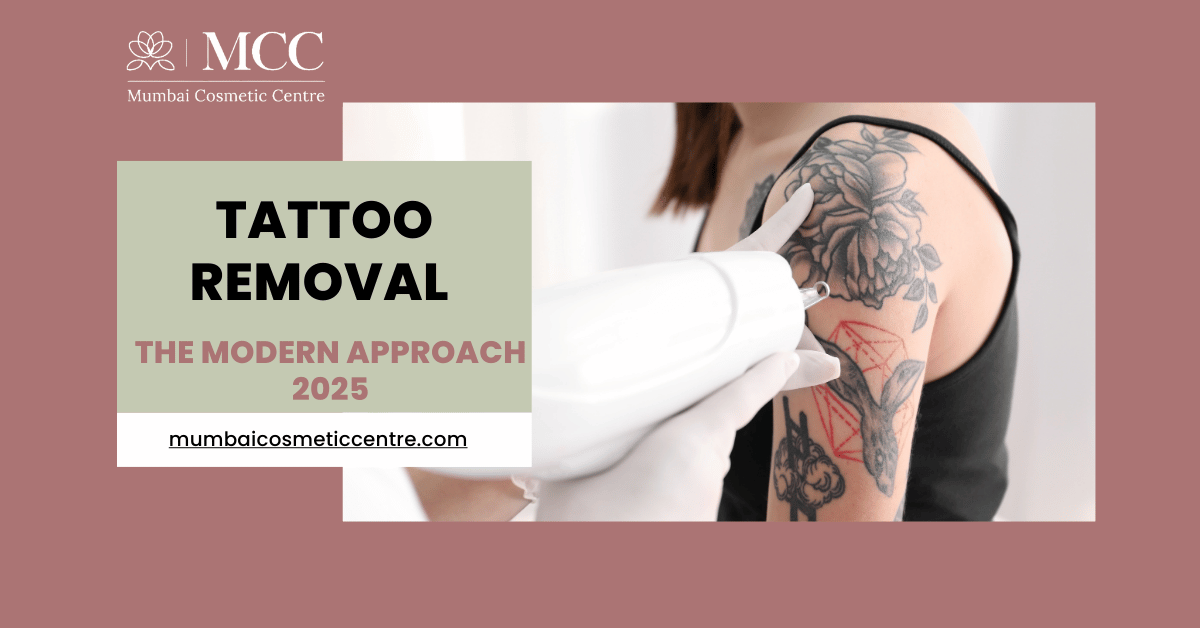Tattoos have long been a form of personal expression, art, and identity. Yet, as tastes change or life circumstances evolve, many people seek to remove or alter their tattoos. Tattoo removal has become an important service, growing in demand due to advances in technology and a greater focus on safe, effective procedures.
In this blog, you will learn about the basics of tattoo removal, common reasons why people choose to remove tattoos, the treatment options available in 2025, and some expert tips for those considering this process.
Understanding Tattoo Removal

A tattoo is created by injecting ink into the skin’s dermis layer. This ink sits under the skin and is meant to be permanent. Tattoo removal targets breaking down this ink so the body can naturally clear it over time.
Key terms to know:
- Laser tattoo removal: The most common and effective method, using focused light beams to shatter ink particles.
- Q-switched lasers: A type of laser that delivers energy in short pulses, targeting tattoo ink while sparing surrounding skin.
- Picosecond lasers: A newer laser type with even faster pulses, designed to break ink into smaller fragments for easier removal.
- Fading: Partial lightening of the tattoo before complete removal.
- Sessions: Multiple treatment visits are needed since each session removes only some ink.
Tattoo removal is complex because inks vary by color and depth, and skin type influences results. Different ink colors respond differently to various laser wavelengths. For example, black and dark blue inks are easier to remove, while greens and yellows are more challenging.
Reasons and Common Concerns for Tattoo Removal
People choose to remove tattoos for many reasons:

- Change in personal preference: What once seemed meaningful may no longer fit an individual’s style or beliefs.
- Professional or social reasons: Some workplaces have policies about visible tattoos.
- Poor tattoo quality: Faded, blurred, or poorly done tattoos often prompt removal.
- Life changes: Relationship changes, regret, or simply wanting a fresh start.
- Health concerns: Allergic reactions or skin problems related to the tattoo.
Common concerns about removal include:
- Pain during treatment: Most describe laser removal as uncomfortable, similar to snapping rubber bands on the skin.
- Scarring and skin damage: Modern lasers minimize risk, but improper care or untrained operators increase it.
- Duration of treatment: Complete removal takes multiple sessions, spaced weeks apart.
- Cost: Tattoo removal can be expensive, depending on tattoo size, color, and the number of sessions needed.
Knowing these points helps set realistic expectations and encourages careful planning before beginning treatment.
Treatment Options and Best Practices in 2025
Laser tattoo removal is the leading method today. Here are details about modern treatments:
- Q-switched lasers: These lasers emit nanosecond pulses that target pigment. They have been standard for years and work well on most ink colors.
- Picosecond lasers: Introduced more recently, picosecond lasers deliver energy in trillionths of a second. This faster delivery breaks ink into smaller pieces, which helps clear difficult colors faster and may require fewer sessions.
- Combination laser treatments: Some clinics use multiple laser wavelengths in the same session to treat multi-colored tattoos effectively.
- Topical anesthetics: To reduce pain, many clinics apply numbing creams before treatment.
- Aftercare protocols: Patients must follow strict skincare routines post-session, such as avoiding sun exposure, keeping the area clean, and moisturizing.
Other, less common methods include:
- Surgical excision: Physically cutting out the tattooed skin. Used only for small tattoos due to scarring risk.
- Dermabrasion: Removing skin layers with a rotating tool. Less popular now because it is more invasive.
- Chemical removal: Using acids or other substances to break down ink, though this can damage skin and is rarely recommended.
Expert Tips and Recommendations
If you are considering tattoo removal, keep these tips in mind:

- Consult a qualified specialist: Proper diagnosis and treatment planning make a difference in results and safety.
- Understand your tattoo: Share information about when it was done, ink colors, and if it has been altered.
- Prepare for multiple sessions: Plan your schedule and budget accordingly.
- Avoid sun exposure: Tanned or sunburned skin can increase side effects and slow healing.
- Follow aftercare instructions closely: This speeds healing and reduces risk of scarring.
- Be patient: Results take time and depend on tattoo complexity and your body’s healing process.
- Manage pain: Discuss options for numbing or pain relief with your provider.
- Consider tattoo fading: Sometimes, partial removal or fading allows for tattoo cover-up or modification.
Consultation with Mumbai Cosmetic Centre
Mumbai Cosmetic Centre offers a range of cosmetic and dermatological treatments, including advanced tattoo removal. Located in Malad, the clinic provides services under expert guidance from Dr. Shruti Shah and Dr. Chetan Shah.
Dr. Shruti Shah integrates modern technologies to provide effective, minimally invasive treatments. She specializes in non-surgical HIFU vaginal tightening, hymenoplasties, and a comprehensive range of gynecological surgeries.
Dr. Chetan Shah is a board-certified anesthesiologist with extensive training, supporting patient comfort and safety during procedures.
For tattoo removal and other services like Face HIFU, upper lip hair reduction, facial hair reduction, and full-body hair reduction, Mumbai Cosmetic Centre is equipped with the latest technology.
Clinic Address:
1st Floor, Milap Apt, Swami Vivekananda Rd, Opposite Milap PVR Cinemas, Malad West, Mumbai, Maharashtra 400064
Phone: +91-7400188399
Email: mccmumbaicosmeticcentre@gmail.com
Appointments can be booked by calling or emailing the clinic.
FAQs About Tattoo Removal
1. How many sessions does tattoo removal usually require?
It depends on the tattoo size, color, and depth. On average, 6 to 10 sessions spaced 6 to 8 weeks apart are common.
2. Does tattoo removal hurt?
Most patients feel discomfort similar to a rubber band snap. Numbing creams can reduce pain.
3. Can all tattoo colors be removed?
Black and dark blue inks respond best. Red, green, and yellow may take longer or require specific lasers.
4. Will tattoo removal leave scars?
Modern laser treatments minimize scarring risk, especially with proper aftercare.
5. How should I care for my skin after treatment?
Keep the area clean, avoid sun exposure, do not pick at scabs, and use recommended ointments.
6. Is tattoo removal safe for all skin types?
Yes, but treatment settings are adjusted based on skin tone to avoid pigmentation issues.
7. How much does tattoo removal cost?
Prices vary by tattoo size, complexity, and number of sessions. Consult your clinic for estimates.
8. Can tattoo removal be combined with other cosmetic treatments?
Yes, but it’s best to discuss timing and treatment plans with your specialist.
Tattoo removal in 2025 uses advanced lasers that break ink safely and effectively. While the process requires patience and care, modern technology offers options that were not available years ago. Choosing the right clinic and following expert advice will give you the best chance for clear skin again. If you are thinking about tattoo removal, consulting a trained professional like those at Mumbai Cosmetic Centre can help you understand your options and plan your treatment confidently.
